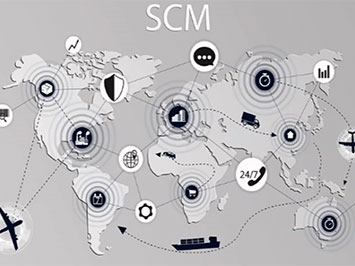During a discussion with manufacturing and supply chain professionals at the Association of Supply Chain Management chapter of Orange County, California, we reviewed the top supply chain challenges impacting clients and colleagues around the world. Here are the top challenges (in no special order):
- Russia-Ukraine war: This war impacted not only oil and gas availability, spurring inflation across the globe, but it also had several supply chain impacts. For example, there were shortages, concerns about supply and new supplier diversification required when commodities such as food, fertilizer, aluminum, nickel, palladium and more used in medical equipment, airplanes, etc. were impacted. It also kicked off changing world power alliances as Russia started selling oil to China instead of Europe.
- China-Taiwan tensions: There is little doubt there are high tensions between China and Taiwan. Since Taiwan produces 90% of the world’s advanced computer chips, this issue is unlikely to change as China would like to control the world’s supply. Also, according to Brookings, China produces 60% of the rare earths and processes 85% of the rare earths (needed for computer chips). This heightened tension has spurred the CHIPS act; however, there are hefty lead times to ramp up infrastructure, and rare earths and raw materials are required. Although the USA has plenty of rare earths, there is currently no political will to use them.
- China High-Risk Alert: In addition to the China-Taiwan tensions, there is a plethora of high risk surrounding China’s actions. Since China accounts for 28.7% of the world’s manufacturing output, they can have a significant impact. Critical supplies such as pharmaceutical ingredients (API), equipment required for electrical power grids, mining for rare earths, lithium for batteries, and more are produced in China. Even without the geopolitical risk, there is scarce water supply in China and limited electrical power; however, the geopolitical risk of situations such as Zero COVID policies remain heightened.
- The Panama Canal: The Panama Canal has 40% market share for containers moving goods from Northeast Asia to the U.S. East Coast, and drought conditions created a 50% reduction in capacity during the last year, severely impacting shipping routes. Thus, companies looked for alternatives such as the Suez Canal or shipping through the West Coast ports and to the East Coast.
- The Suez Canal & the Red Sea: The Suez Canal transports 10% of all maritime trade and 15% of world shipping traffic including 30% of global container traffic. Iran backed Houthis rebels started attacking ships going through the Suez Canal, causing traffic to be diverted around the southern tip of Africa. That adds 10 days of transit time for shipments to Europe and the East Coast of the U.S.
- Regulations: There are a plethora of regulations hitting the supply chain. For example, truck regulations are creating havoc. The technology does not yet exist and new trucks are double the cost and heavier (could double fleet size) with less distance 20% (100 miles vs 1000 miles) and could take 32 times longer to charge if charging infrastructure available. Yet, this is just the beginning. Add EV charging infrastructure, electrical grid challenges, drayage truck challenges, advanced clean fleets regulations and manufacturing regulations, and the situation turns ugly.
- Talent shortage (Skills gap): Workforce participation has been lower (62.5%) than pre-pandemic (63.4%) and the historical average (62.84%). Although low-skilled jobs are being automated, the skills gap with high-skilled resources remains significant. There are serious gaps in knowledge, experience, and the ability to deal successfully with ambiguity.
- Technology: Companies are behind the times when it comes to the use of technology, yet the use of advanced technologies is quickly becoming the only avenue to meet changing customer conditions and elevated customer requirements while meeting profitability goals. Cyber attacks are increasing in frequency to add to the challenges.
- The economy: If this wasn’t enough, the economy is causing companies to be uncertain about the future, hesitant to invest, and worried about the possibility of stagflation (both inflation and recession simultaneously).
Thus, we reviewed strategies to address these challenges proactively while finding avenues to flip from reactive to proactive. The companies that find the winning formula to turn these issues into opportunities will thrive for decades to come. Thus, we discussed several solutions with the top few including:
- Shore up talent: The client with the best talent positioned for profitable growth will win succeed. With the dramatic change with the baby boomer retirements, there is a significant gap and change in style. The companies that find the best approach will dominate.
- Roll out predictive processes: Our best clients constantly look for opportunities for upgrade with processes such as SIOP (Sales Inventory Operations Planning), advanced planning and forecasting with predictive analytics (read more about our planning services), inventory optimization and analytics, and operational improvements focused on scalable growth.
- Upgrade use of ERP & advanced technologies: Clients must leap into the world of modern ERP, automation, robotics, and the use of advanced technologies. Artificial intelligence (AI) is driving significant change in the use of technology. If you aren’t on this bus, you will be left behind.
- Regional supply chains: Smart companies are reshoring, nearshoring, diversifying suppliers, and regionalizing supply chains. Companies are making strategic decisions on reallocating and expanding capacity while maximizing efficiencies and output.
- Strategic pricing & costing: As a part of SIOP programs, customer and product profitability models are analyzed, practical approaches to costing are utilized (in essence, what will have a meaningful impact on cost instead of “moving money around between buckets yet having no impact on bottom line results), and customer value is the focus.
If you’d like to learn more about these strategies, download our complimentary eBook on SIOP: Creating Predictable Revenue and EBITDA Growth and stay tuned for our latest roadmap for success to navigate today’s realities for tomorrow’s success.



